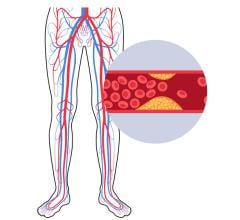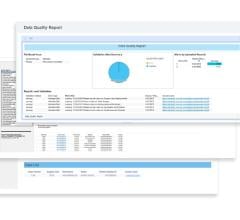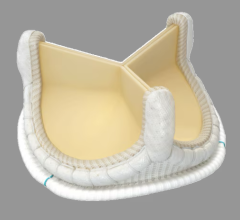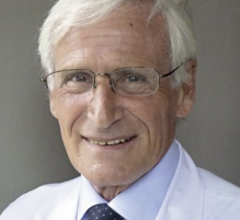
Photo courtesy of PRN
Controlling normothermia in perioperative patients can be almost as important to their health as the surgical procedure itself. Research is revealing more and more the negative implications of even small dips in patient temperature. This is especially true for the very young, the very old and the very ill, who are more susceptible to hypothermia during anesthesia and surgery no matter what the procedure.1
A logical place to begin hypothermia prevention is in pre-op before the patient is even moved to the OR. The theory is that an already warmed patient will not require as much intraoperative warming, especially during shorter procedures. Similarly, patients who are successfully warmed or rewarmed intraoperatively may be at reduced risk for postoperative wound complications.
In the absence of concrete guidelines mandating best-practices for maintaining normothermia in perioperative patients, hospitals are left to their own devices to determine what’s best for patients, resulting in a large margin for interpretation and preference.
Acuity Care Technology has assembled a sampling of warming systems, some new and others not so new, to guide you in choosing the appropriate methods for patient warming and maintaining core temperatures in pre-op, during surgery and for post-op care.
• A proven stand-by in pre-op and the PACU, the Bair Paws system from Arizant is now providing clinicians with access to comfort and clinical warming throughout the perioperative process.
With a single gown, patients may be prewarmed before surgery or receive comfort warming as they await a procedure. Once in the OR, the same gown offers clinical warming for select surgical procedures when connected to a Bair Hugger warming unit. The gown continues to warm in the PACU, with both comfort and clinical capabilities available.
As an added plus, the Bair Paws system allows patients to adjust the temperature of the air flowing through the gown to a level that’s right for them.
• Unlike conventional external temperature management products, such as cooling and warming blankets, pads or ice packs, Alsius intravascular products cool and warm the patient from the inside out, considered by some to be a more effective method for managing body temperature and allowing caregivers easier access to administer patient care.
The Thermogard system is a computer-controlled temperature regulation system that circulates cool or warm saline in a closed-loop circuit through balloons that surround the catheters.
“The ALSIUS intravascular warming catheter is easy to use and provides effective warming during cardiac surgery, especially OPCAB," said Gary S. Allen, M.D., Medical Director of the Heart Institute at Osceola Regional Medical Center, FL.
The catheters are inserted into a major vein through a patient's neck or groin and achieve rapid and precise temperature management through contact with the patient’s blood flow.
• The new Gelli-Roll from Cincinnati Sub Zero may be used before, during or after surgery to effectively provide patient warmth and pressure reduction. A warming blanket is encapsulated within Akton gel pads to maintain patient temperature throughout surgery using warmers such as CSZ’s Norm-O-Temp, Blanketrol or Hemotherm. The Gelli-Roll not only reduces tissue pressure, but also aids in the reduction of tissue trauma and nerve damage.
• PRN ThermalCare is an innovative, cost-effective patient warming and pressure reduction system for surgery patients. Pressure reduction surgical table pads, with X-ray transparent heating technology, provide five times the heated area of forced air. Because the system is reuseable and requires minimal set-up time, PRN ThermalCare warms every patient at no increase in cost and with no medical waste.
• The KIMBERLY-CLARK Patient Warming System integrates a product-patient interface (hydrogel), a conformable insulated thermal pad and precisely regulated warm water as the energy source.These elements are combined to deliver energy to the patient at a controlled rate without limiting surgical access.
The system is composed of a control module and single-use thermal pads that are applied directly to the patient’s body. The control module monitors patient temperature by automatically adjusting the temperature of water circulation through the non-sterile, hydrogel transfer pads positioned on the patient’s back.
• Nellcor’s WarmTouch 5300A warming unit is quiet and features fast warm-up, high air flow rate and a “boost” setting to quickly manage core body temperature. WarmTouch warming blankets are made from a strong, two-ply quilted material that is fluid-resistant and helps prevent tears and punctures. The outer fabric is soft against patient skin; there are no hot plastic surfaces. The blanket’s ample size assures maximum skin surface coverage and the flexible fabric is easy to drape making it useful for almost any procedure.
• The vH2 Temperature Management System from Dynatherm Medical noninvasively prevents or treats intraoperative hypothermia through encapsulation of the patient’s hand. Utilizing the application of heat under low vacuum to open AVAs (thermo-regulatory structures) in the palm and fingers, the vH2 warms blood in the extremity, then delivers this warmth directly to the core through the venous vasculature rather than warming large body surface areas. Convenient to apply and simple to operate, the vH2 Temperature Management System warms the entire patient while covering only a small surface area, and minimizes interference with surgical draping or the operative site.
Source:
1.http://www.apsf.org/resource_center/newsletter/2006/winter/11hypo.htm




 January 24, 2025
January 24, 2025 









